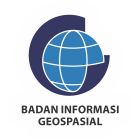TSUNAMI HAZARD ANALYSIS OF LAND USE IN KARANGKANDRI VILLAGE, CILACAP, CENTRAL JAVA
Keywords:
Cilacap, Fuzzy, Karangkandri, Land Use, Numerical Model, Propagation, Tsunami, Penggunaan LahanAbstract
Indonesia is located in the Ring of Fire, making it highly vulnerable to natural disasters such as
earthquakes and tsunamis. Karangkandri Village in Cilacap Regency, situated along the southern coast of Java, is at high risk due to the subduction activity of the Indo-Australian and Eurasian plates. Most of the village consists of residential and agricultural areas that are highly susceptible to tsunami impacts. This study aims to map tsunami hazard zones, analyze their impact on land use, and provide policy recommendations for disaster mitigation. The research employs the COMCOT v1.7/1.7b numerical model to simulate tsunami propagation and inundation, utilizing topography, bathymetry, and land use data as inputs. The tsunami hazard index is calculated using a fuzzy logic method to classify hazard levels into low, medium, and high. The simulation results indicate that the tsunami will reach Karangkandri Village within 54 minutes, with a maximum wave height of 7.34 meters, affecting a total of 416.11 hectares of the village, of which 339.99 hectares are classified as high hazard. The most significantly impacted land uses are residential yards (127.59 hectares) and rice fields (101.87 hectares). This study provides a foundation for the government to formulate disaster mitigation policies, such as constructing tsunami-resistant infrastructure, enhancing early warning systems, and promoting community education. Policy recommendations include establishing local tsunami monitoring posts and developing effective evacuation routes. The government should integrate these findings into regional spatial planning and disaster mitigation programs, while also enhancing community capacity through training and evacuation drills to reduce tsunami disaster risks.
Downloads
Published
How to Cite
Issue
Section
License

This work is licensed under a Creative Commons Attribution-ShareAlike 4.0 International License.






